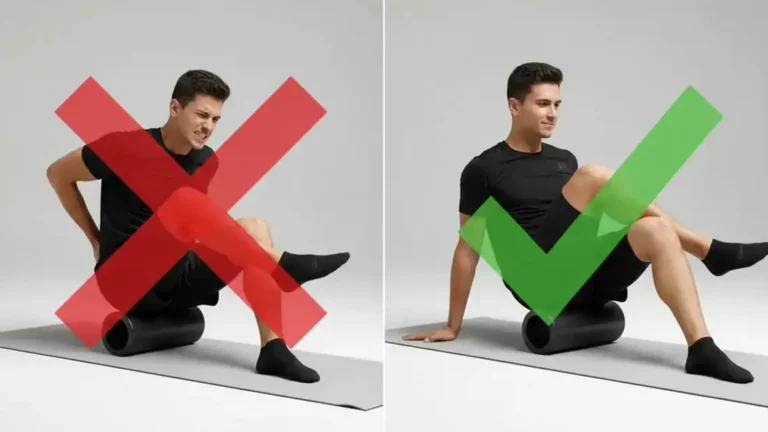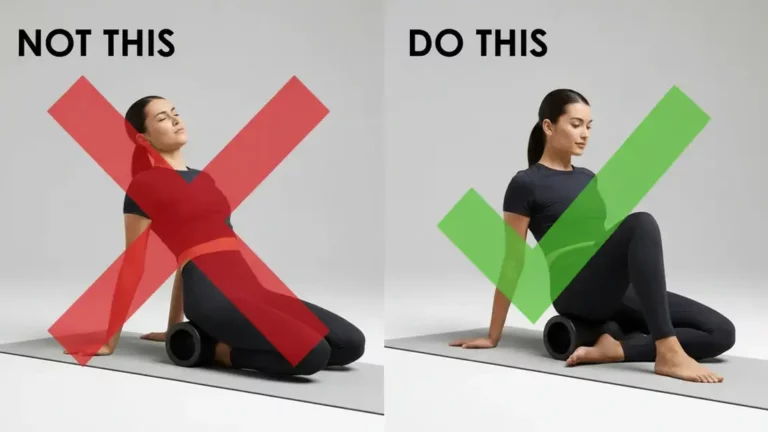CrossFit workouts are renowned for being highly demanding, and for pushing athletes to their physical and mental limits.
To fully ensure that you are able to meet the demands of these workouts of the day (WODs), many have found that it’s vital to not only focus on strength and endurance, but also on efficient breathing techniques.
To ensure you are performing at your best, breathing strategies for CrossFit are the answer.
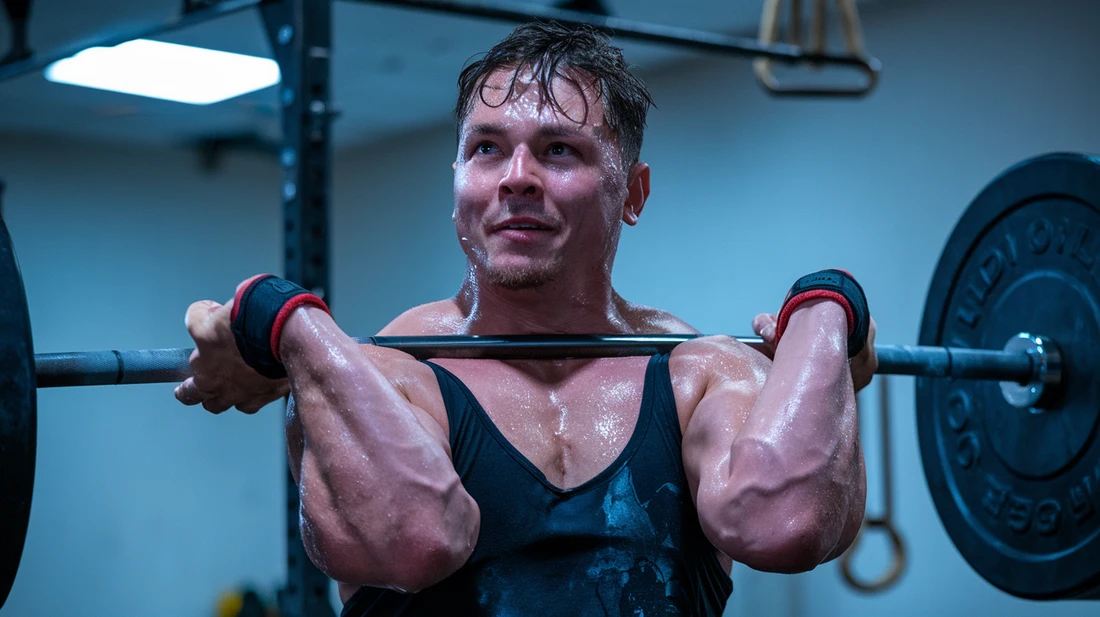
In this blog post, we’ll explore all of the methods and strategies to implement, which will drastically enhance your training and ability to perform.
Let’s dive in and discover all the techniques you can use to excel!
The High-Intensity Demands of CrossFit – Why Proper Breathing is Essential
To fully appreciate the role of breathing strategies for CrossFit, it’s important to first understand just how demanding these workouts can be.
With a variety of high-intensity movements that are designed to test the limits of both your physical strength, and also your endurance, these fast-paced workouts will test your body from head to toe.
This is where implementing proper breathing methods becomes the most critical part of improving your fitness, but also in ensuring you are safe during all activities.
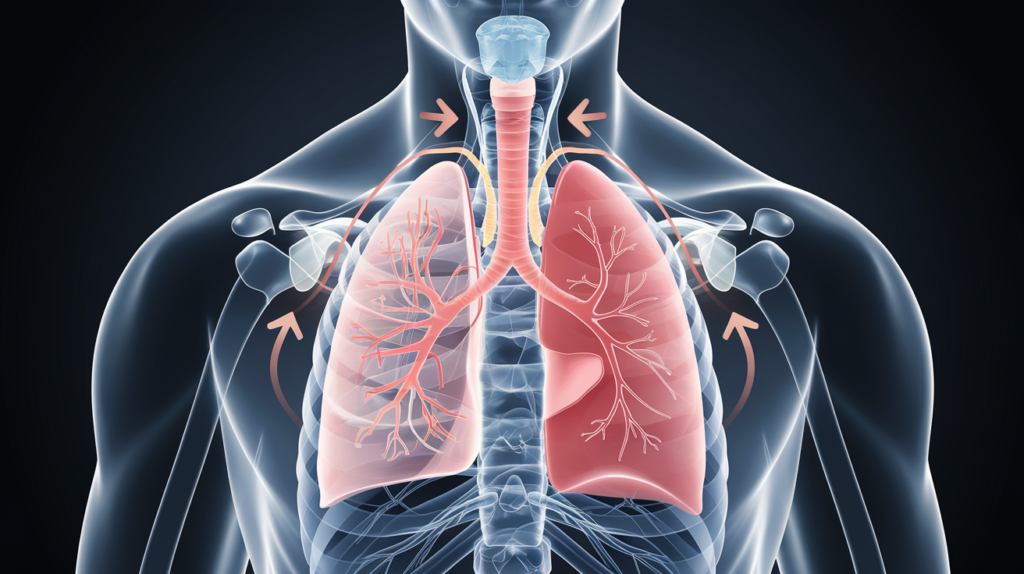
Key Points
- High-Intensity Nature:
- CrossFit workouts often involve a diverse range of exercises performed at a very high intensity. From weightlifting to gymnastic movements and high-intensity cardio, these workouts require your body to exert maximum effort in a short space of time. It is this demand that requires the use of specific breathing techniques to help your body achieve its peak performance.
- Aerobic and Anaerobic Energy Systems:
- These workouts also rely on both your aerobic and anaerobic energy systems, which makes it crucial to have a breathing method in place to deliver consistent oxygen to your muscles, and to also deal with the byproducts of anaerobic metabolism. By using efficient breathing techniques, you are ensuring that your body is able to utilize these energy systems in the most effective way, and also that you are not hindering your ability to perform well.
- Meeting the Demands of Exercise:
- The blend of these different systems has a massive impact on your breathing, which is why focusing on your breathing can help you to make all the difference in your workouts. You have to train your body to take on more oxygen, to regulate your heart rate, and to stay focused as you push yourself. Making even small improvements to the way you breathe, will pay dividends in the future.
Mastering Breathing – Key Techniques for CrossFit Athletes
Now that you understand why breathing is crucial for your performance in Crossfit, let’s dive into the practical techniques that you can implement.
From foundational methods to advanced strategies, these breathing exercises will help you take control of your breath, optimize your workouts, and enhance your recovery.
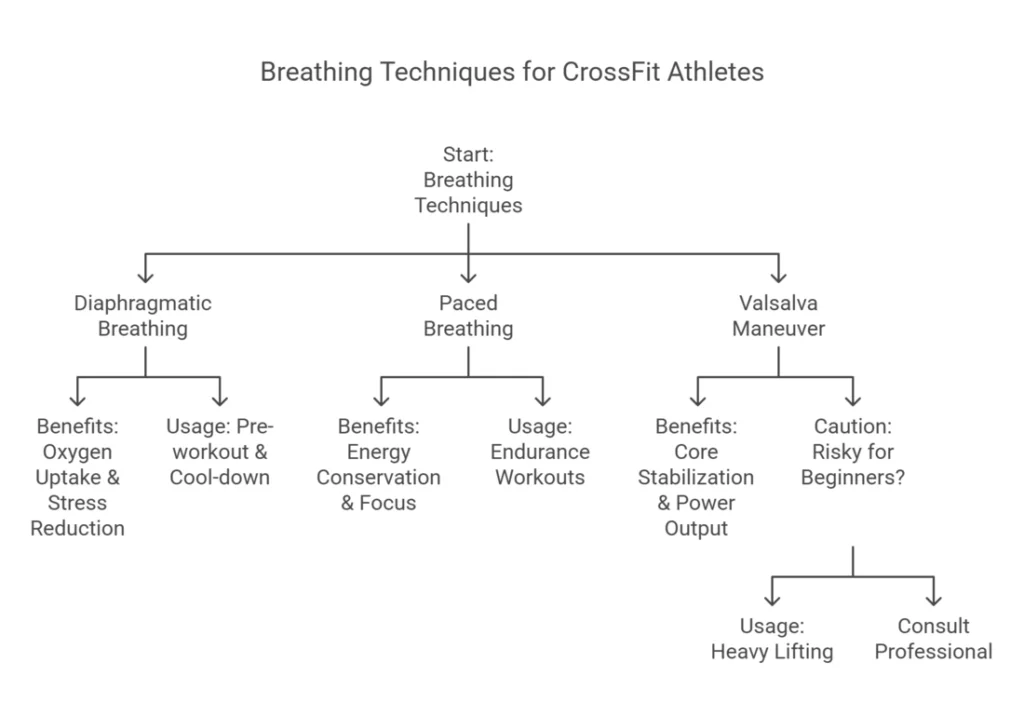
Technique 1- Diaphragmatic Breathing
- How to Perform It:
- Begin by finding a comfortable position that allows you to focus on your breath without any distractions. You can lie down, or sit in a chair with your feet flat on the floor. Place one hand on your chest and the other on your belly, just below your ribs. This will help you to monitor your breathing.
- Inhale slowly and deeply through your nose, allowing your belly to rise while keeping your chest as still as possible. Focus on expanding your diaphragm, which is a large muscle at the bottom of your lungs. This part of your breathing is vital for accessing the maximum amount of oxygen.
- Exhale slowly and gently through your mouth, allowing your belly to fall and also making sure that your chest is relatively still. As you do this, focus on relaxing and letting go of any stress or tension.
- Continue this for at least 5 to 10 minutes, or until you feel a sense of calm and relaxation. The key is to remain consistent with this practice and to do it as often as you can.
- Benefits in CrossFit:
- Diaphragmatic breathing can help to improve your oxygen uptake, promote stress reduction and also enhances your overall recovery.
- This method is also great for reducing tension, for promoting feelings of calm, and to promote a more effective and efficient workout.
- When to Use It:
- Diaphragmatic breathing can be used as a tool for mental preparation before a workout, to create a state of calm, and to also reduce nerves before a big workout.
- It can also be used during your cool-down after a workout to calm your nervous system and to reduce muscle soreness. It has many uses, so try to find what works best for you.
Technique 2 – Paced Breathing
- How to Perform It:
- Paced breathing can help you to conserve energy throughout your workout, which will enable you to power through even the most challenging routines. This helps to improve overall endurance. Paced breathing also helps to maintain focus which will reduce mistakes and enhance power output.
- Begin by choosing an exercise that you enjoy. Focus on breathing and ensure that your movement and breathing are fully synchronized. To do this, count the number of steps you take when you inhale.
- Then, mirror this when you are exhaling. If you inhale for three steps, then make sure you are exhaling for the same amount of time. Adjust this as needed.
- Continue this consistent cycle for the duration of your routine. As you get better, try adjusting your pattern to test your capabilities.
- Paced breathing can help you to conserve energy throughout your workout, which will enable you to power through even the most challenging routines. This helps to improve overall endurance. Paced breathing also helps to maintain focus which will reduce mistakes and enhance power output.
- Benefits in CrossFit:
- This method can help you to make your workouts more efficient and sustainable.
- When to Use It:
- Paced breathing is ideal for long workouts, for any routine that is endurance based, and also for long-distance exercises such as running, swimming or cycling. This method is for any type of cyclic movement that is focused on endurance.
Technique 3 – Valsalva Maneuver (with caution)
- Explain the Technique:
- The Valsalva Maneuver involves taking a deep breath and holding it while tensing your abdominal muscles, and bracing your core.
- This is not a method that should be used by beginners and should also be done with caution, as it can put added pressure on your heart.
- When performed correctly, this method can help you to stabilize your core which enables you to perform heavy lifts, as it helps to improve overall power output.
- It is often used for improving core strength and should only be used by advanced athletes, who are wanting to push their maximum.
- This is a method that should only be used during heavy lifting, as you are testing your overall power and strength.
- This method may not be suitable for those with heart conditions.
- Benefits in CrossFit:
- The Valsalva Maneuver is definitely not a technique for the faint of heart, and it comes with a high level of risk.
- When to Use It:
- It should not be performed for any other reason than maximum output, and you should always consult a professional before attempting.
Disclaimer: The Valsalva maneuver can be dangerous, as you are increasing the pressure in your body. Please seek medical advice, before implementing this technique. It should only be used by highly experienced athletes.
Breathing Strategies for Different CrossFit WODs
CrossFit workouts are famously varied, with each Workout of the Day (WOD) presenting a unique set of challenges.
To truly optimize your performance, it’s not enough to simply know how to breathe; you also need to know when and why to use specific breathing techniques.
This section breaks down the best breathing strategies for different types of CrossFit workouts.
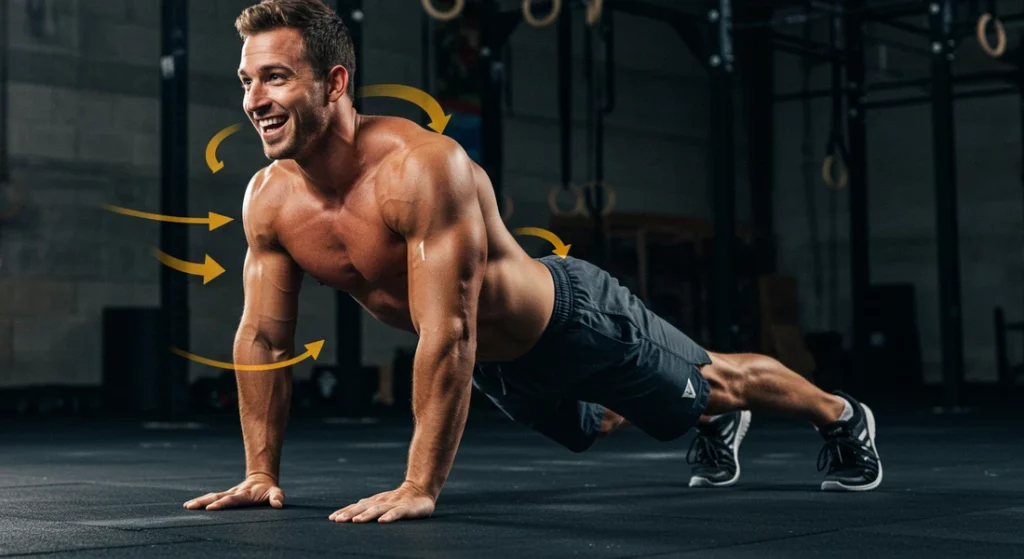
Key Points (Specific WODs)
- For Shorter, High-Intensity WODs (e.g., Fran):
- “Fran” is a benchmark WOD involving thrusters and pull-ups, that is designed to test your limits. During a WOD such as this, you should be focusing on maximizing each breath, and you should not be afraid to use short bursts of air to get you through the toughest of movements.
- It’s important to use every bit of air to help power through the routine, and if you need to hold your breath for a second, you may want to try this, in order to complete the movements.
- Key Takeaway: Use the technique effectively, by using breath holds and also maximizing each breath.
- For Longer Endurance-Focused WODs (e.g., Murph):
- “Murph” is a longer WOD that involves movements such as running, pull-ups, push-ups, and squats. These are all movements that you should try to use paced breathing to help you get through, as stamina and endurance are key.
- This is a test of endurance and stamina, so learning how to manage your breath is key. You should always be taking controlled breaths, that are matched to the intensity of the exercise, and remember to never push yourself beyond what is needed. If you have any energy left at the end, then you know you have paced yourself correctly.
- Key Takeaway: Implement consistent and stable breathing to see positive results.
- For Strength-Based WODs (e.g., Grace):
- When you are performing a strength-based WOD such as “Grace”, you should be focusing on your core strength, and also maximizing your power output with each rep. Using this power will be vital for success during this intense workout, which focuses on speed and also pure strength.
- This can be achieved by knowing when to breathe in and out, and also by engaging your core effectively. Remember that good form and technique is vital to ensure that this method is used safely and effectively.
- Key Takeaway: Know when to breathe in for the up, and out for the down, to maximize power output.
Table Summarizing Breathing Strategies
| WOD Type | Recommended Breathing Techniques | Key Takeaways |
| High-Intensity (Fran) | Diaphragmatic, Power Breaths | Maximize each breath, use short bursts of high-intensity breathing |
| Endurance (Murph) | Nasal Breathing, Paced Breathing | Consistent breathing, manage energy levels |
| Strength-Based (Grace) | Valsalva Maneuver (with caution), Controlled Exhalation during exertion | Breath-holding for power, core stability |
The Role of Breathing in Injury Prevention
Beyond boosting your performance and speeding up your recovery, implementing proper breathing methods can also play a vital role in injury prevention, which should be a key consideration for any Crossfit athlete.
By improving your breathing, you are improving your body’s ability to perform at its peak, but you are also making steps towards enhancing your overall well-being.
These are just some of the key ways that you can benefit from better breath.
Preventative Measures
- Improving Core Stability:
- Proper breathing, particularly diaphragmatic breathing, can significantly enhance core stability by engaging the deep abdominal muscles. A strong and stable core is key to protecting your spine and to performing heavy lifting movements, as it acts as a foundation for all of your workouts.
- This is something that is often overlooked, however, by focusing on your core, you can improve your overall form, and avoid the risks associated with bad technique.
- Enhancing Movement Patterns:
- Breathing exercises can help to create a better sense of body awareness, which will not only vastly improve your coordination and overall movement patterns, but will also give you a boost in performance, which would never have been achieved otherwise.
- It also helps to promote greater body balance, and to also provide more control, which are key components of a good technique.
- Reducing Stress and Tension:
- When you are feeling stressed or tense, your muscles are also more likely to be tense and stiff. By implementing some of the methods that you may use to create a greater sense of calm (such as diaphragmatic breathing or paced breathing), you are also helping to improve your overall mind and body connection.
- By reducing your overall levels of stress, you can enhance your overall well-being and ensure that your body is more able to perform at its best.
Breathing Techniques for Common CrossFit Movements
Now that you understand some of the basics, it’s time to get specific! Here’s a breakdown of breathing techniques for common CrossFit movements.
Applying these techniques will enhance your power and also reduce the risk of injury.
However, remember that everyone is different, and it is about finding the specific techniques that work for you.
Movement Recommendations
- Snatch:
- The snatch is a fast, explosive lift that requires a lot of power. It’s best to use the Valsalva maneuver (if you are experienced and understand the risks), which will help to stabilize your core and generate as much force as possible. However, only use this if you are an experienced Crossfitter and also follow all safety instructions. You should also use nasal breathing as you prepare, and also after your set to ensure that you are recovering effectively.
- Clean and Jerk:
- The clean and jerk involves lifting a barbell from the floor to your shoulders and then overhead. Similar to the snatch, it is important that you are focusing on your power and your core. To achieve this, it is best to take a deep breath before the lift, hold it as you perform the clean, and then exhale as you finish the jerk.
- Remember to maintain a stable core, and to also only use this method if you are an experienced athlete who can perform this with safety and ease.
- Overhead Squat:
- This is a challenging movement that requires both strength and flexibility. To help with this, it is essential to focus on breathing, to help you maintain balance, and stability throughout the movement. It is useful to inhale as you lower into the squat, and then exhale as you come back up.
- It is also very useful to perform diaphragmatic breathing before you perform this exercise to centre your mind and body, and to assist in stability. Remember, with this exercise (and all exercises), it is essential to listen to your body, and to avoid pushing yourself too hard.
Preventing Overtraining – The Power of Breath
Pushing your limits is a key component of Crossfit, but it’s vital to recognize that overtraining can set you back and also lead to injuries.
Proper breathing techniques can be a great tool for preventing overtraining and also for maintaining long term sustainable fitness results.
Key Points
- Breathing and the Parasympathetic Nervous System:
- By using proper breathing techniques, you can activate the parasympathetic nervous system, which helps to promote the ‘rest and digest’ response. This will help to counteract the stress response from training, and will also enable your body to fully focus on recovery.
- Taking time to focus on your breathing is an important part of looking after your well-being. It also is a great way to take a break from intense movements.
- Consistent Routines:
- The key to avoiding overtraining is to be consistent with your breathing exercises, as this will help you manage your overall stress levels and create a routine that will help to prevent injury. A combination of breathing and proper planning of your workouts will also assist you.
- You should also make sure that you are using proper breathing techniques outside of just your workouts, to ensure that you have a solid foundation to improve your well-being.
- Listening to Your Body:
- To use your breath as a tool, you need to focus on being mindful, and to make sure that you are listening to your body at all times. This is especially important during exercise, and it can be tempting to push yourself beyond your capabilities. It is vital that you understand your body’s limits, and do not exceed these to avoid pain and discomfort.
- You also need to be aware of your breathing, and whether it is stable and slow, or if you are gasping for air. When you are aware of this, you will then have a tool to be able to know when to stop.
Tools To Enhance Your Breathing For CrossFit
To help further improve your breathing techniques, there are many different tools available that can help you, and that can also help to improve your overall performance.
These tools are designed to help you focus on specific aspects of breathing, and may also help you to stay consistent with your routine.
Tool Recommendations
- Breathing Exercisers:
- Breathing exercisers are also known as respiratory muscle trainers, and these are designed to improve the strength and endurance of your breathing muscles, including your diaphragm and lungs. They work by providing resistance as you inhale or exhale, which forces your muscles to work harder and, overtime, they will grow to be stronger and more resilient.
- You can use these on a regular basis to improve your overall lung strength, your air flow, and your power. Be sure to start slowly to avoid any negative impacts on your breathing.
- Fitness Trackers with Breathing Rate Monitoring:
- A fitness tracker is great for tracking all aspects of your fitness journey, and some have the functionality to track your breathing patterns and rhythms. When used effectively, you will be able to see what you are doing well, and where you can make improvements. You will also be able to use it to measure improvements in your overall performance.
- There are many good quality fitness trackers available to purchase that will help you to track your progress, and they are highly recommended for those looking to take their breathing techniques to the next level.
- Breath Strips:
- Breath strips are designed to help open up your nasal passages, which also increases the amount of air that flows through your nose, when you are performing nasal breathing. This product has been specifically designed to create an open pathway for air, and helps to make your breath more effective and also more controlled.
- If you find it difficult to perform nasal breathing, then you may benefit from using this method.
Frequently Asked Questions About Breathing and CrossFit
If you’re still unsure about anything we’ve covered, then I have created a list of frequently asked questions.
These will help you to get a better understanding of the topic of breathing for Crossfit, and help you implement changes as efficiently as possible.
- Question 1: How can I improve my breathing during CrossFit?
- Answer: To improve your breathing in Crossfit, it is essential to start by focusing on the different techniques that are used to promote better lung capacity, stress release and mind-body awareness. You should also ensure that you are performing each exercise correctly, as inefficient movements will cause your body to use more energy than is needed, and result in a less effective performance.
- Question 2: Which is the best breathing technique to use for CrossFit?
- Answer: There is no single “best” breathing technique, as it can vary between individuals, and also between the different workouts and the different intensity levels. You may find that some methods, such as belly breathing, are more useful during a cool down, while others may be better for specific exercises, such as the Valsalva Maneuver. Therefore, it is important to experiment and find what works best for you and your body.
- Question 3: What is the valsalva maneuver and is it safe?
- Answer: The Valsalva Maneuver involves holding your breath while stabilizing your core muscles during heavy lifts, which helps to increase your power output and also protect your spine. While effective for strength-based workouts, the Valsalva Maneuver can be dangerous for those who are not experienced, and who do not have a solid understanding of how to perform it correctly. Therefore, it is often recommended that beginners avoid this practice altogether or consult with a professional, before using it.
- Question 4: How can breathing help my recovery during CrossFit?
- Proper breathing has been shown to promote faster recovery by improving oxygen delivery to the muscles, reducing stress hormones, and promoting relaxation. These are key elements in the recovery process and should not be ignored. If you are wanting to fully ensure you are allowing your body to recover effectively, then you need to implement proper breathing.
Final Thoughts on Breathing and CrossFit
Congratulations on reaching the end of this guide.
I hope that you have taken away some useful information that will help you to further excel in your Crossfit journey.
Remember that breathing is often overlooked but is key for all levels of performance, and will also help to keep you safe and injury free.
As we have explored in this blog post, the connection between your breathing and your workouts is not a simple one, but by following a few key rules and methods, you can be on your way to success.
Be sure to explore all of the different techniques that are available and also remember to pay attention to your body, and what it needs at all times.
It is now time to take action!
I encourage you to start experimenting with your breathing today, and to see just how much of a difference this can make to your workout performance.
Whether you are doing cardio, or heavy weight lifting, you can make a big impact on your overall ability simply by focusing on your breath.
Now go forth and breathe!
References
- Diaphragmatic Breathing Benefits:
- Link: https://pubmed.ncbi.nlm.nih.gov/19875429/
- Title: Diaphragmatic Breathing Reduces Exercise-Induced Oxidative Stress
- Why it’s Credible: This study, published in The Journal of Alternative and Complementary Medicine, provides evidence for how diaphragmatic breathing can help improve athletic performance.
- Paced Breathing and Performance:
- Link: https://pmc.ncbi.nlm.nih.gov/articles/PMC5732209/
- Title: Influence of Breathing Frequency on Performance and Physiological Responses during Incremental Exercise
- Why it’s Credible: This study published in PLoS One, explores the influence of breathing frequency on exercise performance.
- Valsalva Maneuver Safety and Efficacy:
- Link: https://pubmed.ncbi.nlm.nih.gov/7631342/
- Title: The valsalva maneuver: its effect on arterial blood pressure and cerebral blood flow
- Why it’s Credible: This study published in Spine, discusses the influence of the Valsalva maneuver on blood pressure.

